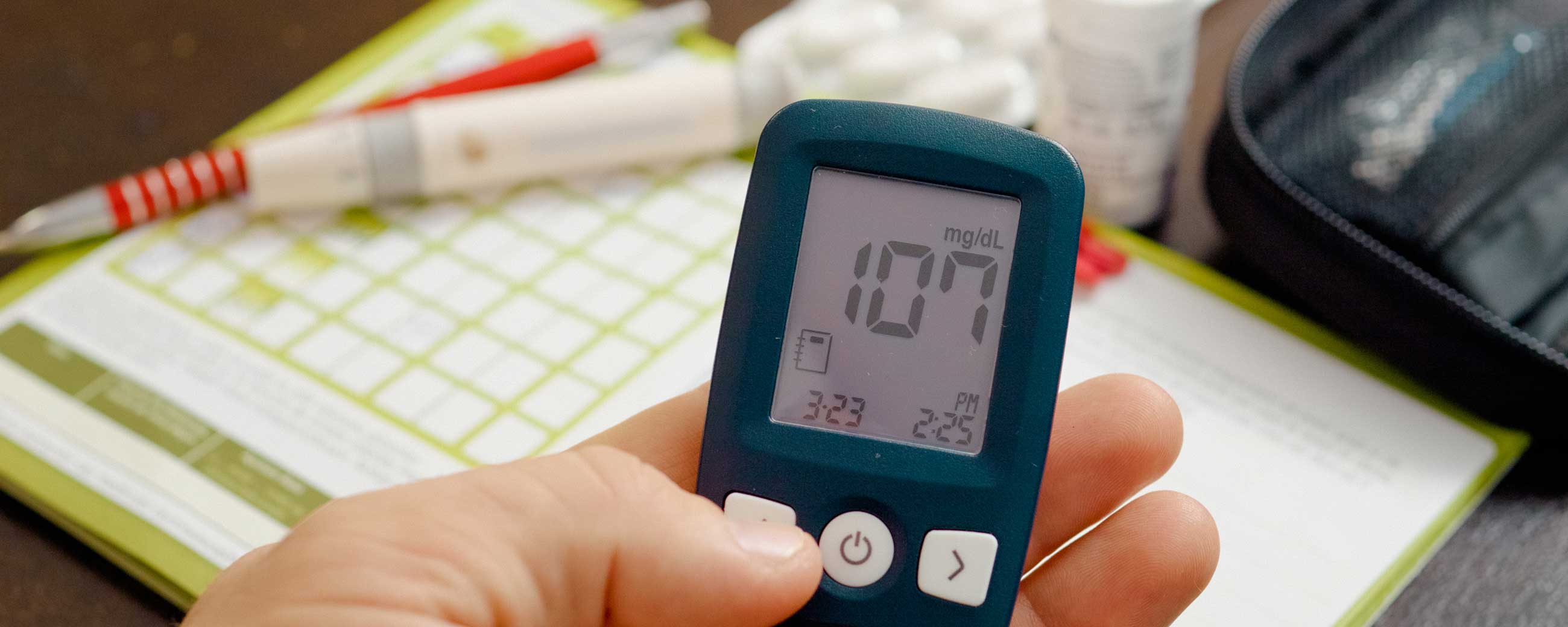
What Are Macros and Micros Anyway?

Geary felt he had tried every medication available for his type 2 diabetes, high blood pressure, and obesity. Ditto for diets, which he struggled to maintain. Feeling defeated and tired of the financial burdens of insulin, he joined Vitra in 2017 with the goal of reversing his diagnosis.
“I was most excited about the program because I could eat protein and fat,” Geary says. “Second, I loved that there would be a health coach because I knew I couldn’t do it alone.”
Protein and fat are two of the three macronutrients vital for health. You may have seen talk of counting macros and micros (macronutrients and micronutrients) on social media. But what are macros, and is focusing on them a good idea for Type 2 diabetes and weight loss? Let’s dig into the details on macros for diabetes and weight loss.
What are macronutrients (macros)?
Macros are essential nutrients you need to maintain energy and overall health: Fat, protein, and carbohydrates. What are micros, then? The difference between macronutrients vs. micronutrients is that micros are vitamins and minerals, like vitamins A and C, magnesium and zinc. They’re essential for overall health as well.
Most foods are a good source of at least one macronutrient. Some foods have two or all three macronutrients. For instance, a half-cup serving of chickpeas contains:
- 2.13 grams of fat
- 7.25 grams of protein
- 22.45 grams of carbs
How to figure out your macros
Calculating macros for diabetics can feel like an overwhelming amount of math. At Virta, we don’t believe there’s one specific formula for anyone. Health coaches work with you to provide a personalized approach to nutrition that relies on your health goals and your body’s feedback to make food choices. Plus, many factors play into macro and micro calculations, including:
- Age
- Activity level
- Goals
- Genes
However, having a baseline may be a useful jumping-off point for you. Generally, a well-formulated ketogenic diet consists of:
- 70-75% fat
- 20% protein
- 5-10% carbs
If you are following a 2,000-calorie diet, you may find it helpful to utilize one of several apps that can give you targets to start with::
- 75% fat = 1,500 calories from fat
- 20% protein = 400 calories from protein
- 5% carbs = 100 calories from carbs
The app can then provide you with a breakdown of grams for each macronutrient. For example, there are 9 calories per gram of fat and 4 calories per gram of protein and carbs. So your final recommendation would break down to
- 165 grams of fat
- 100 grams of protein
- 25 grams of carbs
If tracking your macros is a helpful addition to your routine, using a food journal and working with a supportive team is a great way to determine the best food choices to help you reach your goals.
Best macros for weight loss
What are macros for weight loss? All three macronutrients play a role in helping you lose weight. While not all calories are created equal, a calorie deficit that combines whole foods and physical activity is considered the most effective weight loss approach.
Scientists haven’t found an “optimal macro ratio” for weight loss either. For instance, one 2021 review found that several ratios helped with weight loss efforts. However, it’s possible that finding your optimal ratio of macros can help you boost post-meal satisfaction, reduce blood sugar spikes and crashes, and lose weight as a result.
Here’s a breakdown of the benefits of each macronutrient, plus foods that represent good sources of them.
Fat
Unsaturated fats like omega-3s and omega-6s found in nuts and salmon have heart-healthy benefits and increase satiety, so you don’t crave more food quickly. It’s best to avoid high fat processed foods, such as trans fats and refined seed oils, as these may increase your risk of chronic diseases like diabetes and heart disease.
Protein
Protein reduces appetite and supports building lean muscle, which can reduce body fat and boost metabolism. Some protein sources have all nine essential amino acids that we cannot make in our bodies and must absorb through food, which are called complete proteins. These are usually from animals. Combining incomplete proteins, like chickpeas, with foods that have a complete profile of amino acids like brown rice can help your body get the nutrients needed to thrive.
Carbohydrates
If you follow a low-carb, keto-style diet, your body gets all the nutrients it needs without relying on carbohydrates. If you eat more carbs, it’s important to consume complex carbohydrates that contain more fiber and digest more slowly, which can keep blood sugar stable. Whole wheat pasta, whole-grain bread, and brown rice are higher fiber complex carbs. Refined carbs like table sugar and white bread break down more quickly and can cause spikes and crashes in glucose.
Is counting macros good for those with Type 2 Diabetes?
The effectiveness of using macros for people with diabetes depends on the person. Some people may like it because:
- They feel in control of their dietary choices
- The data-driven approach helps them get the nutrients they need
- It holds them accountable
However, others may find calculating macros and micros for weight loss and diabetes:
- Overwhelming
- Time-consuming
- Restrictive
- This prevents them from engaging in social eating
- Triggers disordered eating thoughts and behaviors
Speaking with your support team can help you find the best approach for you.
The Takeaway
All the social media buzz about macros and micros may leave you wondering, “What are macros?” Macros are fat, protein, and carbohydrates, three nutrients that each play a key role in your health. You may see many “optimal” formulas, but the best ratio of macros for you requires customization. A good support team is vital if you are diagnosed with type 2 diabetes and are trying to live a healthier life. Virta Health may be able to help. By making healthy lifestyle tweaks in a medical setting with personalized support like 1:1 virtual coaching, you can regain control of your health and feel like your best self. See if you’re eligible for Virta Health here.”
This blog is intended for informational purposes only and is not meant to be a substitute for professional medical advice, diagnosis, or treatment. Always seek the advice of your physician or other qualified health provider with any questions you may have regarding a medical condition or any advice relating to your health. View full disclaimer
Are you living with type 2 diabetes, prediabetes, or unwanted weight?








